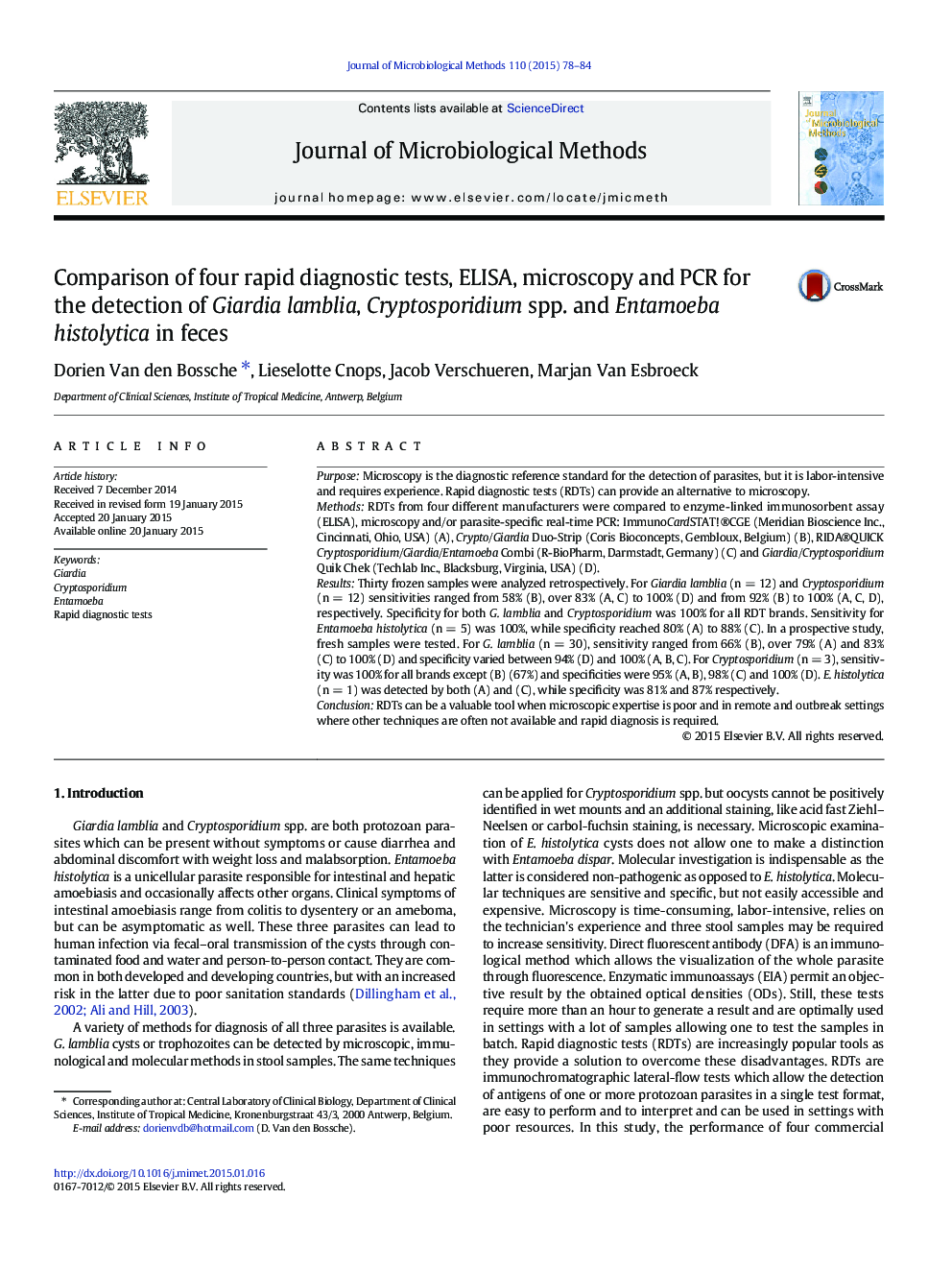| کد مقاله | کد نشریه | سال انتشار | مقاله انگلیسی | نسخه تمام متن |
|---|---|---|---|---|
| 2089839 | 1545933 | 2015 | 7 صفحه PDF | دانلود رایگان |

• We examine four rapid diagnostic tests for Giardia, Cryptosporidium and Entamoeba.
• Sensitivities are good for Cryptosporidium and E. histolytica, variable for Giardia.
• Specificities are excellent for G. lamblia and Cryptosporidium.
• Differentiation between E. histolytica/dispar by PCR remains necessary.
• When microscopic expertise is poor, this can be a valuable tool to replace microscopy.
PurposeMicroscopy is the diagnostic reference standard for the detection of parasites, but it is labor-intensive and requires experience. Rapid diagnostic tests (RDTs) can provide an alternative to microscopy.MethodsRDTs from four different manufacturers were compared to enzyme-linked immunosorbent assay (ELISA), microscopy and/or parasite-specific real-time PCR: ImmunoCardSTAT!®CGE (Meridian Bioscience Inc., Cincinnati, Ohio, USA) (A), Crypto/Giardia Duo-Strip (Coris Bioconcepts, Gembloux, Belgium) (B), RIDA®QUICK Cryptosporidium/Giardia/Entamoeba Combi (R-BioPharm, Darmstadt, Germany) (C) and Giardia/Cryptosporidium Quik Chek (Techlab Inc., Blacksburg, Virginia, USA) (D).ResultsThirty frozen samples were analyzed retrospectively. For Giardia lamblia (n = 12) and Cryptosporidium (n = 12) sensitivities ranged from 58% (B), over 83% (A, C) to 100% (D) and from 92% (B) to 100% (A, C, D), respectively. Specificity for both G. lamblia and Cryptosporidium was 100% for all RDT brands. Sensitivity for Entamoeba histolytica (n = 5) was 100%, while specificity reached 80% (A) to 88% (C). In a prospective study, fresh samples were tested. For G. lamblia (n = 30), sensitivity ranged from 66% (B), over 79% (A) and 83% (C) to 100% (D) and specificity varied between 94% (D) and 100% (A, B, C). For Cryptosporidium (n = 3), sensitivity was 100% for all brands except (B) (67%) and specificities were 95% (A, B), 98% (C) and 100% (D). E. histolytica (n = 1) was detected by both (A) and (C), while specificity was 81% and 87% respectively.ConclusionRDTs can be a valuable tool when microscopic expertise is poor and in remote and outbreak settings where other techniques are often not available and rapid diagnosis is required.
Journal: Journal of Microbiological Methods - Volume 110, March 2015, Pages 78–84